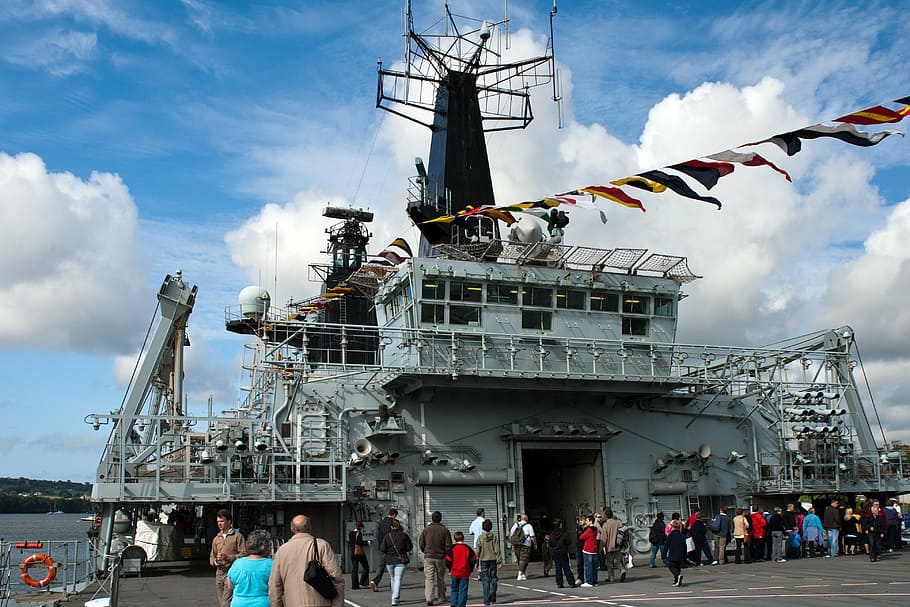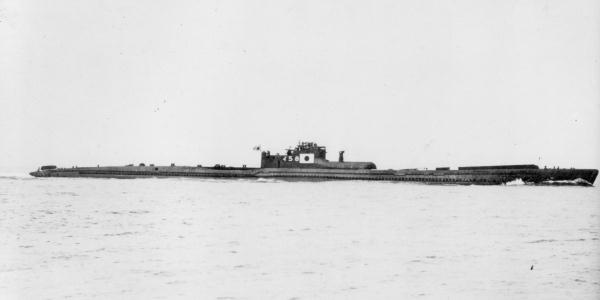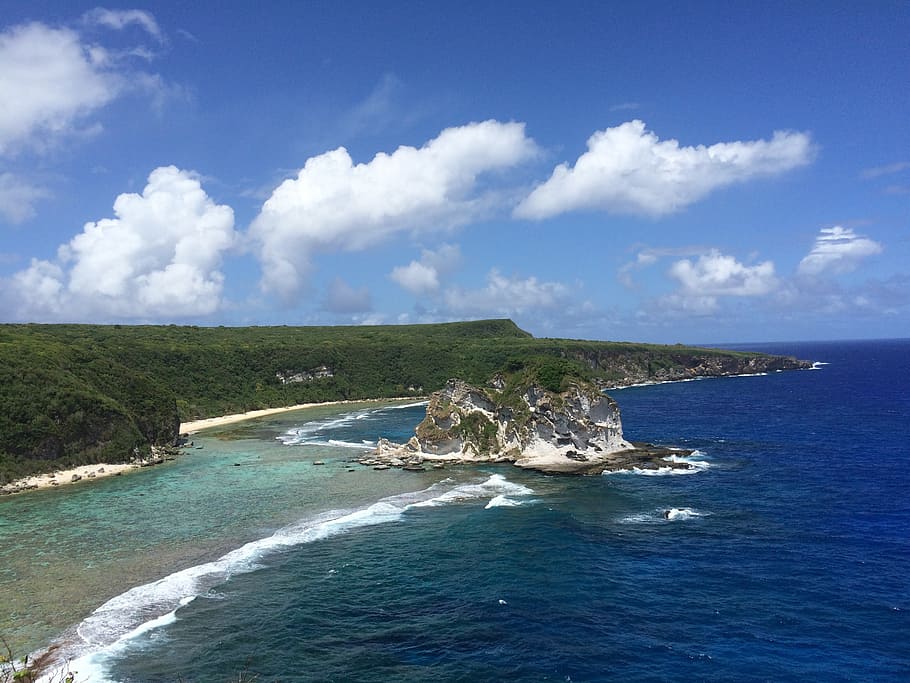企業戦略 2021.08.13
CS31 海の武士道 1(米軍艦「インディアナポリス」)”Bushido of the Sea” 1 (USS Indianapolis, CA-35)
目次
For those who prefer to read this column in English, the Japanese text is followed by a British English translation, so please scroll down to the bottom of the Japanese text.
8月6日は「広島原爆の日」、そして今週8月9日は「長崎原爆の日」であった。
昨年2020年8月15日、本コラムに投稿した「CS13-『ながい旅』(岡田 資 陸軍中将) “Nagai tabi (Long Journey)” (Lt. Gen. Tasuku Okada)」に、「1923年(大正12年)、オランダのハーグで米英仏蘭伊日の会合が持たれ、『爆撃は軍事目標に対して行なわれた時のみ適法とする』という宣言がなされた」と記したとおり、多くの非戦闘員を対象にした無差別爆撃、とりわけ大量殺戮を前提とした原爆の投下という行為は、「人的な被害の一段の拡大が懸念された戦争を終わらせるためには、原爆投下はやむを得なかった」という考え方によっても首肯することはできず、如何に理由を付けようと民間人の大量殺戮を主に狙う「その残虐性」の点から絶対に許されるものではない。

1.レーダー(「電探」)
昨年、2020年2月25日に投稿したコラム記事「RM 17-レーダー(「魚焼きの網」)Radar (”gridiron”)」に以下を記した。
レーダーの主要部品は2つ、「発振器」と「アンテナ」である。米国、英国をはじめとした諸外国のレーダー開発には、主要部分に日本人の発明が利用されていた、「八木・宇田アンテナ」と「分割陽極型マグネトロン」である。したがって、「レーダーは、日本人が発明、制作した」と言っても過言ではなかったのである。
八木・宇田アンテナは、八木秀次と宇田新太郎という日本人研究者の研究成果であり、魚の骨のような簡単な構造で、優れた性能(鋭い指向性と高い利得)が得られたことが利点であった。今でもテレビの受信アンテナとして広く使われているアンテナである。このアンテナは、日本では誰にも注目されなかったものの、1926年に英語で論文を発表したところ、米国で大いに賞賛された発明品である。
一方、発振器「分割陽極型マグネトロン」もまた、日本人研究者である岡部金治郎が、1927年に発表したものであった。それまで米国で開発されていた単陽極マグネトロンでは不可能だった、高い周波数(マイクロ波)の発振を可能としたうえ、かつ高効率であり、レーダーの実用化に向けて、性能を飛躍的に高める研究成果であった。
1920年代に、日本人研究者によりこれらの画期的な新技術が生み出されていたにもかかわらず、日本陸海軍はその研究の成果をレーダー開発につなげることはできなかった。海軍では、「これからの海戦にレーダーが必要かどうか」という議論が盛んになされた一方で、事業化に進むための具体的な検討はずっと低調であった。「ノーベル賞の後追いで文化勲章の授与」等が典型的な例であるが、日本で認められずに海外で認められて日本に逆輸入されることが多いが、昔からそうであったのである。
しかし、一方、米国と英国をはじめとする諸外国では、これらの研究成果を早期に事業化し、通信機器やレーダーの開発に応用したのであった。旧日本軍は、「情報を活かすことを考える部門、人が欠落していて、『精神論』ばかりが一人歩きする組織であった証拠」であろう。
「日本人が発明、制作した」と言えるレーダー、しかし、多くの旧日本海軍の艦船には装備されておらず、されていても精度の低いものであり、米海軍の艦船に搭載されていたレーダーによって旧日本海軍の艦船の動きは逐一捕捉され、多くの戦いで勝敗の帰趨を決する「決め手」となっていた。

米海軍重巡洋艦「インディアナポリス(USS Indianapolis, CA-35)」(1937年ハワイ真珠湾で撮影)
2.米海軍重巡洋艦「インディアナポリス(USS Indianapolis, CA-35)」
マイクロソフトの共同創業者ポール・アレンは、父親が太平洋戦争に従軍していたことから軍用機や軍艦に興味を持ち、彼の設立した財団の活動の一環として「兵器遺産収集」をおこなっていたが、2015年3月フィリピン・レイテ島沖で、太平洋戦争時に沈没した旧日本海軍の戦艦「武蔵」を発見した。この時の様子はテレビで報道されたことで記憶しているが、更に、2017年8月彼の率いる調査チームは「太平洋戦争中に沈没した米海軍の重巡洋艦『インディアナポリス』を発見した」と発表した。
この軍艦「インディアナポリス」の名前は、日本ではあまり馴染みがないが、米国では、その果たした役割も有って非常に有名な軍艦である。1945年8月6日広島に原爆を落としたB29「エノラゲイ」、8月9日長崎に投下したB29「ボックスカー」に搭載した「原子爆弾」を米国西海岸からB29の基地があったテニアン島まで運んだ船なのである。
「1931年進水」と設計が少し古く、またマストが高いため安定性が悪く、さらに防御性も弱い艦であった。当時の米海軍の艦船では「通常装備」であった「エアコン」も装備されておらず、また扇風機が発生する静電気が「レーダー探知の機能を妨害する」という理由で、扇風機も使えないような艦であった。
原爆を運び終えたテニアン島からの帰路、「インディアナポリス」はフィリピンのレイテ島へと向かったが、その航海の途中、旧日本海軍の潜水艦「伊58号」(艦長:橋本以行中佐)から発射された、当時世界最高峰の魚雷と言われた「九五式酸素魚雷」の雷撃を受け沈没、乗員1,200名余りのうち最終的に救助された生存者はわずか300名足らずであった。その一人が、艦長チャールズ・B・マクベイ3世大佐であったが、沈没の3か月後、彼は「船の航行を絶えず変えて魚雷の回避行動(「ジグザク航行」)を取らず船を危険にさらした」という理由で軍法会議にかけられ、そして有罪の判決が下された。こうして海軍での彼の生命は絶たれたのである。
米海軍は、多くの犠牲者を出し「米海軍史上最大の悲劇」となった「インディアナポリス」沈没の責任をすべてマクベイ艦長に負わせる意図を持っていたようである。そのことを裏付けるように、「インディアナポリス」を撃沈した日本海軍「伊58号」の元艦長橋本以行中佐を米国に召喚、尋問したのである。しかし、彼は、米軍に忖度することなく「あの位置関係ならば回避行動(ジグザク航行)をしていたとしても撃沈できた」と「雷撃を受けたのは、マクベイ艦長の過失では無い」との見解を証言した。更に、橋本元艦長は、その後もインディアナポリスの元乗組員と一緒になって、マクベイ艦長の名誉を回復する活動に尽力し続け、こうした橋本元艦長の一連の行動は「海の武士道」と呼ばれた。
米国は第二次世界大戦の戦闘で700隻以上の艦船を失ったが、戦闘で撃沈された艦艇の艦長が軍法会議にかけられたのはマクベイ元艦長ただ一人であった。彼は苦悩の日々を送り失意のうち1968年自殺した。その後、「マクベイ元艦長の軍法会議は誤審である」との訴えが提起、審理され、その結果、2000年米国議会は「彼はインディアナポリスの損失に対しては無罪である」と決議、10月クリントン大統領のサインによって発効した。しかし、マクベイ艦長の名誉回復に後半生を捧げた橋本元中佐はこの5日前に死去、この知らせが橋本元中佐の耳に届くことはなかったのである。

旧日本海軍潜水艦「伊58号」(1944年(昭和19年)東京湾で撮影)
3.橋本以行(はしもともちつら)艦長
「日米潜水艦戦―第三の原爆搭載艦撃沈艦長の遺稿 (光人社NF文庫)」には、橋本元艦長の手によって、原爆を運んだ米重巡「インディアナポリス」を雷撃、撃沈するまでの一部始終が記されている。
冒頭述べたとおり、太平洋戦争の中盤以降「米海軍の艦船に搭載されていたレーダーによって艦船の動きは逐一捕捉されていた」旧日本海軍は、まったく勝ち目の無い戦いを続けていた。「ハワイ真珠湾攻撃」による太平洋戦争開戦から早くも7ヶ月後、1942年(昭和17年)6月にはその後の日米の命運を決める岐路となった中部太平洋上ミッドウェー島付近で行われた戦い、「ミッドウェー海戦」が勃発した。日・米の空母機動部隊同士の戦いで、日本海軍は投入した空母4隻そしてその艦載機約300機の全てを喪失した。この戦いを境に日本は、敗北への途を辿ることになった、「歴史転換点の戦い」である。この戦いを制した武器は戦艦でも航空機でも無く、それらに装備された「レーダー」であった。レーダーによって日本海軍の動きは全て米海軍に読まれていたのである。
そうしたことから、同書には「レーダー」、日本語では「電波探信儀」(電探)の必要性を橋本元艦長が叫ぶ記述が多く記されていた。「日本海軍の艦船の電探装備が著しく遅れたため、どれほど多くの歴戦の艦長が、レーダーを装備した米海軍によって艦を特定され、一方的な戦闘で撃沈の憂き目に遭っていたか」が記されていた。
しかし、戦争末期に近づくに連れて「レーダー」(「電探」)の必要性にようやく気づいた旧日本海軍は、その開発に全精力を傾け、高性能の電探を開発した。「インディアナポリス」に対峙した橋本元艦長の「伊58号」には、「八木式アンテナ」によるこの非常に高性能な電探が装備されていたのである。
1945年7月29日、パラオ島北方で、浮上して「電探」を使用して索敵していた「伊58号」は、「レーダー」(「電探」)上に「インディアナポリス」の艦影を発見した。それまで「レーダー(「電探」)に苦しめられ負け戦を余儀なくされていたが、終戦間際になって今度はその「レーダー」(「電探」)によって、「原爆」を秘密裏に運んだ米重巡「インディアナポリス」をその帰路、雷撃、撃沈することができたのである。
「レーダー(電探)」が「戦いの帰趨を決する武器」と旧日本海軍がようやく認識できたときには既に終戦間際であった。しかし、この戦争末期になって日本のレーダー技術が飛躍的に進歩していたことは、戦後、日本の電器産業界が勃興する大きな背景となり高度経済成長を支え、日本経済の復興に大きく寄与することに繋がっていくのである。
4.米重巡「インディアナポリス」沈没の謎
「インディアナポリス」は「伊58号」から2発の魚雷を受けたが、なぜ12分という瞬く間に沈んだのか、戦艦、重巡洋艦のような大型艦は魚雷を何発も受けても沈まない構造に造られている、防水用の部屋である「防水隔室」が艦の船首から船尾まで貫き、各部屋が浸水してもハッチを閉めれば沈まない構造に出来ているからである。
なぜ防水隔室が機能しなかったのか。「戦闘状態」では必ず締めておかなければならない窓やハッチは、ポール・アレン率いる調査チームが発見した「インディアナポリスの残骸」では、全て開け放たれていたからである。灼熱の赤道下の航行であった。しかも、前述の通り「『エアコン』も装備されておらず、また扇風機が発生する静電気が『レーダー探知の機能』を妨害するということで、扇風機も使えないような艦」であったため、「熱気を艦内から外に逃がすため、風を通すため」に、上甲板からの入り口、中甲板、下甲板の防水扉。また窓、これら全てを開けっぱなしにしたのである。この「水の通り道」が出来ていたため、浸水はあっという間に艦内全域に拡がり、攻撃を受けて僅か10分足らずで、この排水量1万トン近い重巡洋艦があっけなく沈没してしまったのである。
更に、不幸なことに魚雷が艦橋前方の通信装備が設置されている箇所に命中したため、通信装備をすべて破壊、「インディアナポリス」は「SOS」を何度も発信しようとしたが、通信はまったくできなかった。しかし、おかしなことに、予定では「インディアナポリス」は7月31日にレイテに到着することになっていたが、その姿が何日も見えないにも関わらず、マッカーサー将軍麾下のレイテ島の「第7艦隊司令部」ではまったくこのことに関知しておらず、そのため「救援艦の派遣」はされていなかったのである。
この背景としては、驚くことに、ニミッツ提督麾下のグアムを本拠地とする「太平洋艦隊司令部」と、マッカーサー将軍麾下のフィリピン・レイテ島を本拠地とする「第7艦隊司令部」との関係が良くなかったためと言われている。本来、海軍の上部機構がおこなわなければならない「沈没情報の確認」及び「乗組員の救助活動」がおこなわれなかったことが招いた悲劇であった。そういう「海軍首脳部の問題、不手際」の責任を「インディアナポリス」のマクベイ艦長にすべて押しつけた。そう認めるに足る証拠、証言がその後幾つも確認されたため、2000年米国議会は「マクベイ艦長はインディアナポリスの損失に対しては無罪である」と決議、クリントン大統領がサインしたのである。当時の海軍首脳部の「責任逃れの行為」を断罪するために。
「伊58号」は、1946年4月1日米海軍が実施した日本海軍の残存した潜水艦の一斉処分「ローズエンド作戦」によって、五島列島沖で他潜水艦23隻ともに海没処分となった。

今回のまとめ
「インディアナポリス」の悲劇を「『戦争という特別な状況下で起きたこと』とは考えず、企業戦略、またその核であるリスクマネジメントという観点から見る」と学ぶことは多い。現代の企業に活かすべき「米海軍の行動への疑問」は:
①なぜ、テニアン島、フィリピンのレイテ島という、中部太平洋上の「赤道に近い熱帯地域」への「輸送船」として、エアコンも装備しない「インディアナポリス」をその任に就かせたのか、的確性を検証したのか。
②なぜ、「重巡洋艦インディアナポリス一隻」で行動させたのか。
③なぜ、「重要任務を負わせた艦船の行動を継続的に把握しよう」としなかったのか。
④なぜ、「予定期日に入港しなかったインディアナポリス」の所在を確認しようとしなかったのか。
米海軍の首脳部の考え方の基底部にあったものは、「太平洋戦争はもうすぐ終わる」ということであろう。それが「日本軍はもう攻めてこないだろう」という憶測に基づいた油断を招き、「回避航行(ジグザク航行)」せず、また「全ての窓、ハッチを開ける」という「戦場ではあり得ない行動」をさせたのではないだろうか。また、到着予定地レイテ島の「第7艦隊司令部」にも蔓延していたその「気の緩み」が、予定期日になっても入港しないインディアナポリスのことを気にとめることもなく、また対応もしなかった主因であろう。
同様のことを企業の立場に置き換えることができるであろう。戦争に限らず、事前の「用意」と事後の「対処」は何事に於いても重要である。企業自身(内部)そして事業環境(外部)、それらの「リスク」を洗い出して「対応策」を検討する。リスクマネジメントを一言で言えばこうなる。そのためには、リスクマネジメントを「机上の学問にしないため」の方策、真剣な検証と検討を導き出す手段が必要となる。それが、「自社がリスクを取る仕組み」である「キャプティブ」である。とりわけグローバル・リンクが推奨する「ソリューション・キャプティブ®」が自社のリスクマネジメントに果たす効用は大きい。
薄日が差してきた「コロナ禍」の先を睨んで、企業業績を大きく回復させ、更に「コロナ禍前」よりも業績を伸ばすためには必須の企業戦略である。今こそキャプティブを視野に本格的なリスクマネジメントに取り組む時ではないだろうか。
執筆・翻訳者:羽谷 信一郎
English Translation
Corporate Strategy (CS) 31 – “Bushido of the Sea” 1 (USS Indianapolis, CA-35)
August 6th was” Hiroshima Atomic Bomb Day”, and this week August 9th is” Nagasaki Atomic Bomb Day”.
In my article “CS13-“Nagai tabi (Long Journey)” (Lt. Gen. Tasuku Okada),” which I wrote in my column on August 15, 2020, I wrote: “In 1923, a meeting of the United States, Britain, France, the Netherlands, Italy and Japan was held in The Hague, the Netherlands, and the declaration was made that “bombing is only legal when it is carried out against military targets”. The indiscriminate bombing of many non-combatants, and especially the dropping of the atomic bombs, which was based on the premise of mass killing, cannot be affirmed by the idea that “the dropping of the atomic bombs was unavoidable in order to end a war in which there were fears of further human suffering”, and no matter what reason is given, it is absolutely unacceptable from the point of view of “its cruelty”, which mainly aimed at mass killing of civilians.
1. Radar
Last year, in my column article “RM 17 – Radar (“gridiron”)” posted on 25 February 2020, I wrote the following
The two main components of a radar are the “oscillator” and the “antenna”. In the development of radar in the United States, Great Britain and other countries, Japanese inventions were used for the main parts: the “Yagi-Uda antenna” and the “split-anode magnetron”. It was therefore no exaggeration to say that radar was invented and produced by the Japanese.
The Yagi-Uda antenna was the result of the work of two Japanese researchers, Hidetsugu Yagi and Shintaro Uda, and its advantage was that it was as simple as a fish bone yet had excellent performance (sharp directivity and high gain). This antenna is still widely used as a television receiving antenna. This antenna was not noticed by anyone in Japan, but when it was published in English in 1926, it was a much-admired invention in the USA.
On the other hand, the oscillator “split-anode magnetron” was also published in 1927 by a Japanese researcher, Kinjiro Okabe. The oscillator was able to oscillate at higher frequencies (microwaves) than was possible with the single-anode magnetrons developed in the USA, and was highly efficient, a result of his research which dramatically improved the performance of radar for practical use.
Even though Japanese researchers had produced these revolutionary innovative technologies in the 1920s, the Japanese Army and Navy were unable to translate the results of their research into radar development. While there was much debate in the Navy as to whether radar was necessary for future naval warfare, concrete studies to commercialise it were much slower. “The awarding of the Order of Culture on the heels of the Nobel Prize is a typical example of this, but it has always been the case, as it is often the case that things that are not recognised in Japan are recognised abroad and imported back to Japan.
On the other hand, however, the United States and Britain and other countries commercialised these research results at an early stage and applied them to the development of communications equipment and radar. The former Japanese military was “evidence of an organisation that lacked the departments and people to think about making the most of information, and where ‘mentalism’ was the sole focus”.
However, radar, which can be said to have been “invented and created by the Japanese”, was not equipped on many of the ships of the former Imperial Japanese Navy, and even if it had been, it would have been of low accuracy. It was the “decisive factor” in deciding the outcome of many battles.
Microsoft co-founder Paul Allen, whose father served in the Pacific War, has an interest in military aircraft and warships, and as part of the work of his foundation, “Weapons Heritage Collection”.
In March 2015, off the island of Leyte in the Philippines, he discovered the former Imperial Japanese Navy battleship Musashi, which had been sunk during the Pacific War. In August 2017, his team announced that they had found the Indianapolis, a US Navy heavy cruiser sunk during the Pacific War.
The name “Indianapolis” is not familiar in Japan, but in the U.S. it is incredibly famous because of the role it played in the atomic bombings of Hiroshima on August 6, 1945, and Nagasaki on August 9, 1945, which were carried by the B-29 “Enola Gay” and the B-29 “Boxcar”. “This was the ship that carried the atomic bombs from the west coast of the USA to Tinian, the base for the B-29s.
“The ship was a little old in design, having been launched in 1931, and her high masts made her less stable and less defensible. The ship was not equipped with air conditioning, which was “normal equipment” on U.S. Navy ships at the time, and fans could not be used because the static electricity generated by the fans “interfered with the function of radar detection”.
On her return voyage from Tinian, where she had carried the atomic bomb, the Indianapolis headed for Leyte in the Philippines, but on the way, she was struck by a “Type 95 oxygen torpedo”, said to be the world’s most powerful torpedo at the time, fired from the former Japanese Navy submarine I-58 (commanded by Capt. Mochitsura Hashimoto) and sank. Of the 1,200 men on board, only 300 survived to be rescued. One of the survivors was Captain Charles B. McVay III, who was court-martialed and convicted three months after the sinking for “endangering the ship by continually altering her course and failing to take evasive action against torpedoes (‘zigzagging’)”. His life in the Navy was thus cut short.
It seems that the US Navy intended to place all the blame for the sinking of the Indianapolis on Captain McVay, which resulted in many casualties and was “the greatest tragedy in the history of the US Navy”. As if to confirm this, the former commander of the I-58, the Japanese submarine that sank the Indianapolis, was summoned to the US for questioning. However, he testified to the view that it was not the fault of Captain McVay that the ship was struck by lightning, saying that “in that position, even if she had taken evasive action (zigzag navigation), we could have sunk her.” He continued to work with the former crew of the Indianapolis to restore McVay’s reputation, and his actions were known as the “Bushido of the Sea”.
The United States lost more than seven hundred ships in the fighting of World War II, but only one captain of a ship sunk in battle was ever court-martialed, the former Captain McVay. He was so distressed and disappointed that he committed suicide in 1968. In 2000, the U.S. Congress voted to acquit McVay of the loss of the Indianapolis, a decision signed into law by President Clinton in October. But Commander Hashimoto, who had devoted the last half of his life to restoring Captain McVay’s honour, had died five days earlier and the news never reached his ears.
3. Captain Mochitsura Hashimoto
“In the book Japan-U.S. Submarine Warfare: The Legacy of the Captain Who Sank the Third Atomic Bomb-Carrying Ship (Kojinsha NF Bunko), Captain Hashimoto describes the entire process of the sinking of the U.S.S. Indianapolis, the heavy cruiser carrying the atomic bomb.
As mentioned at the beginning, from the middle of the Pacific War onwards, “every movement of the ships was captured by the radar installed on the ships of the US Navy”, and the former Imperial Japanese Navy continued to fight a battle in which it had no chance at all. “In June 1942, already seven months after the start of the Pacific War with the attack on Pearl Harbor in Hawaii, the Battle of Midway broke out, a battle fought near Midway Island in the central Pacific that was to decide the fate of Japan and the United States. In the battle between the Japanese and American carrier task forces, the Imperial Japanese Navy lost four of its aircraft carriers and all the three hundred aircraft on board them. This battle marked a turning point in Japan’s history, as it set the country on the road to defeat. The weapon that won this battle was neither battleships nor aircraft, but the “radar” that they were equipped with. By means of radar, all the movements of the Imperial Japanese Navy could be read by the US Navy.
For this reason, the book contains many descriptions of the need for “radar”, or in Japanese, “radio wave detectors” (dentan), as ex-ship captain Hashimoto called them. “He wrote: “Because of the great delay in equipping the ships of the Imperial Japanese Navy with radar, how many of our veteran captains had been identified by the radar-equipped US Navy and sunk in one-sided battles”.
However, towards the end of the war, the Imperial Japanese Navy finally realised the need for radar and devoted all its energies to the development of high-performance radar systems. The “I-58” of Captain Hashimoto, which confronted the “Indianapolis”, was equipped with this immensely powerful radar with a “Yagi-type antenna”.
On July 29, 1945, north of Palau Island, the “I-58”, which had surfaced to search for the enemy using the “telemetry”, found the shadow of the “Indianapolis” on the “radar” (“dentan”). At the end of the war, however, the radar enabled the I-58 to destroy the Indianapolis on her way home, which had secretly carried the atomic bomb.
“It was already near the end of the war when the Imperial Japanese Navy finally realised that radar was the weapon that would decide the outcome of the war. However, the fact that Japanese radar technology had advanced dramatically by the end of the war provided the backdrop for the emergence of Japan’s electrical industry after the war, supporting the country’s rapid economic growth and contributing greatly to its economic recovery.
4. The Mystery of the Sinking of the US Heavy Cruiser “Indianapolis”
“The Indianapolis” was hit by two torpedoes from the I-58, but why did she sink in the blink of an eye in 12 minutes? Large ships such as battleships and heavy cruisers are built in such a way that they do not sink even if they are hit by a few torpedoes.
Why did the watertight bulkheads not work? Because the windows and hatches, which must be closed in “combat conditions”, were all open in the “Indianapolis wreckage” discovered by Paul Allen and his team. It was a scorching hot equatorial voyage. Moreover, as mentioned above, “the ship was not equipped with air conditioning, nor could it use fans because the static electricity generated by the fans would interfere with the radar detection function”. The windows were all left open. Because of this “passage of water”, the flooding quickly spread throughout the ship, and in less than ten minutes of being attacked, this heavy cruiser of nearly 10,000 tons of water displacement was quickly sunk.
Unfortunately, the torpedoes hit the communications equipment forward of the bridge, destroying all communications equipment, and the “Indianapolis” tried repeatedly to send out an “SOS” but was unable to communicate at all. Strangely enough, the Indianapolis was due to arrive in Leyte on 31 July, but despite being out of sight for several days, the Seventh Fleet Command in Leyte under General MacArthur was completely unaware of this, and no “relief ship” was dispatched. The background to this was, surprisingly, the fact that the poor relationship between the Pacific Fleet Command based in Guam under Admiral Nimitz and the Seventh Fleet Command based in Leyte in the Philippines under General MacArthur. This tragedy was caused by the fact that the “confirmation of the information of the sinking” and the “rescue activities of the crew”, which should have been carried out by the upper structure of the Navy, were not carried out. The blame for such “problems and failures of the naval leadership” was placed entirely on Captain McVay of the “Indianapolis”. The evidence and testimony were so compelling that in 2000 Congress passed a resolution, signed by President Clinton, that “Captain McVay is not guilty of the loss of the Indianapolis. President Clinton signed the resolution to absolve the then Navy leadership of “any act of evasion of responsibility”.
“On April 1, 1946, the U.S. Navy conducted “Operation Rose’s End” to destroy the remaining submarines of the Imperial Japanese Navy, and the I-58, along with twenty-three other submarines, was submerged off the Goto Islands.
Summary of this issue
“There is much to be learnt from the Indianapolis tragedy if we look at it from the point of view of corporate strategy and risk management”, which is at its core, and not as something that happened under the extraordinary circumstances of war. Questions about the US Navy’s actions that should be applied to companies today are:
(1) Why did the USS Indianapolis, which is not equipped with air-conditioning, serve as a “transport ship” to the “tropical region near the equator” in the central Pacific Ocean, namely Tinian Island and Leyte Island in the Philippines?
(2) Why was the “Indianapolis” a single heavy cruiser?
(3) Why did the Navy not “continuously monitor the activities of the ships assigned to important missions”?
(4) Why was no attempt made to ascertain the whereabouts of the “Indianapolis” that did not enter port on the scheduled date?
At the base of the thinking of the leaders of the US Navy was the idea that the Pacific War would soon be over. This may have led them to be careless, based on the assumption that the Japanese would not attack again, and to take the “uncharacteristic battlefield action” of not “zigzagging” and “opening all windows and hatches”. The “laxity” that prevailed at the Seventh Fleet headquarters on the island of Leyte, where the ship was due to arrive, was the main reason no attention was paid to the Indianapolis, which did not arrive until the scheduled date, and why no action was taken.
The same can be applied to the position of companies. It is important to be prepared for anything, not just war, but to be prepared for anything and to deal with it afterwards. It is important to identify the risks to the company itself (internal) and to the business environment (external) and to consider how to respond to them. This is risk management concisely.
To achieve this, it is necessary to have a means of ensuring that risk management does not become an academic discipline, and that it can be seriously tested and examined. This is what we call a captive, a system where the company takes the risk. In particular, the Solution Captive® recommended by Global Link has a significant role to play in risk management.
It is an essential strategy for companies to look beyond the “Covid-19 disaster”, which is now fading into the distance, and to make a significant recovery in their performance, and to increase their performance even further than before the “Covid-19 disaster”. Now is the time for serious risk management with a view to captives.
Author/translator: Shinichiro Hatani

